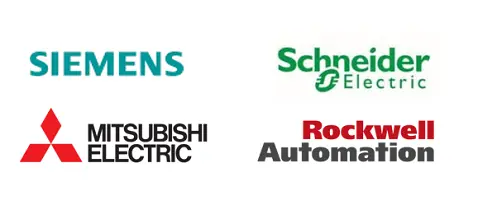Market Overview:
"The global palletizing robot market was valued at US$ 1.6 billion in 2024 and is expected to register a CAGR of 6.0% over the forecast period and reach US$ 2.7 billion in 2033."
|
Report Attributes |
Details |
|
Base Year |
2024 |
|
Forecast Years |
2025-2033 |
|
Historical Years |
2021-2024 |
|
Palletizing Robot Market Growth Rate (2025-2033) |
6.0% |
Palletizing robots revolutionize warehouse automation by streamlining the process of stacking goods onto pallets. These versatile machines enhance efficiency and reduce labor costs in industries like manufacturing, logistics, and distribution. Palletizing robots excel in precision and speed, ensuring consistent stacking patterns and minimizing product damage.
Available in various configurations, two primary types stand out, including articulated robots and robotic arms. Articulated robots are multi-jointed robots and exhibit exceptional flexibility, reaching objects from multiple angles, and are ideal for handling diverse products and complex palletizing patterns. Robotic arms are simple, and these types of robots excel in repetitive tasks owing to a fixed arm structure, and are cost-effective and suitable for high-volume palletizing of uniform items. Deployment of these palletizing robots boosts productivity, reduces operational expenses, and enhances workplace safety, and are indispensable in modern industrial settings.
The global palletizing robot market has been registering significantly robust revenue growth owing to rising demand for automation across industries. Increasing deployment of these robots to optimize packing and shipping operations and enhance supply chain efficiency are driving demand and supporting market revenue growth. Services based on palletizing robots include integration, maintenance, and customization, catering to diverse industry needs.
Technological advancements such as AI-driven programming and sensor systems have improved accuracy and adaptability. Initiatives towards sustainable solutions in packaging and logistics amplify significance of these solutions. Some key advantages of using these solutions include higher productivity, reduced labor costs, and improved workplace safety. Comprehensive analysis reveals a trajectory of continued expansion, offering valuable insights into optimizing operations through automation.
Palletizing Robot Market Trends and Drivers:
Rising Demand for Automation: Industries worldwide are embracing automation to enhance efficiency and reduce labor costs. Palletizing robots offer precise and swift stacking, streamlining logistics and manufacturing processes.
E-Commerce Boom: Surge in online shopping has increased the need for efficient order fulfilment. Palletizing robots enable faster sorting and packaging, meeting the demands of e-commerce platforms.
Technological Advancements: Artificial intelligence, machine learning, and improved sensors have led to smarter and adaptable palletizing robots. These advancements enable robots to handle products of various shapes, sizes, and weights, reduce potential errors, and optimize pallet configurations.
Customization and Flexibility: Modern palletizing robots can be customized to suit specific industry requirements. This adaptability ensures seamless integration into diverse production lines, and is further driving market growth.
Safety and Ergonomics: Palletizing robots enhance workplace safety by reducing the need for manual labor for hazardous tasks. Improved ergonomics and reduced injuries positively impact both employee well-being and operational efficiency.
Sustainability Initiatives: Palletizing robots contribute to sustainable packaging practices, as well as minimize product damage during stacking, reduce waste, and promoting eco-friendly shipping methods, all of which align with global sustainability goals.
Palletizing Robot Market Restraining Factors:
High Initial Investment: The upfront cost of acquiring and integrating palletizing robots can be substantial, deterring some businesses from adopting this technology.
Complex Implementation: Integrating palletizing robots into existing workflows can be complex and time-consuming, leading to disruptions and resistance from traditional labor practices.
Limited Adaptability: While modern robots are versatile, some industries with unique products or irregular shapes may find it challenging to program robots for efficient palletizing, limiting their applicability.
Maintenance Costs: Maintenance and repair of palletizing robots require specialized expertise, leading to ongoing expenses that can impact the overall cost-effectiveness.
Technological Integration Challenges: Integrating palletizing robots with other automation systems or software platforms can pose compatibility and synchronization issues, slowing down the adoption process.
Job Displacement Concerns: The deployment of automation technology can lead to job displacement fears, potentially leading to resistance from labor unions and regulatory hurdles.
Palletizing Robot Market Opportunities:
Customization Services: Companies can capitalize on rising demand for tailored solutions by offering customization services. Providing palletizing robots that cater to specific industry needs and product types can create a competitive edge and attract clients seeking specialized automation.
Software Development: Developing user-friendly programming software for palletizing robots can be a lucrative opportunity. Intuitive interfaces that simplify robot programming and operation can increase adoption rates among businesses with varying levels of technical expertise.
Maintenance and Support: Offering comprehensive maintenance packages, repair services, and remote monitoring solutions can generate steady revenue streams. Ensuring the smooth operation of palletizing robots helps clients minimize downtime and disruptions.
Data Analytics and Insights: Companies can offer data analytics tools that provide insights into operational efficiency, palletizing patterns, and maintenance predictions. Such services can help clients optimize their processes and make informed decisions.
Training and Consultation: Providing training programs and consultancy services for companies transitioning to automated palletizing can be a valuable revenue source. Educating clients about the benefits and best practices of palletizing robots can ease their adoption journey.
Integration Solutions: Developing seamless integration solutions for incorporating palletizing robots into existing production lines can attract businesses seeking hassle-free automation. Companies can offer turnkey solutions that minimize downtime and ensure a smooth transition.
Palletizing Robot Market Segmentation:
By Type of Robot:
- Articulated Robots
- Cartesian Robots
- Robotic Arms
- Collaborative Robots (Cobots)
By End-Use Industry:
- Food and Beverage
- Packaging
- Pharmaceuticals
- Automotive
- Consumer Goods
- Manufacturing
- E-commerce
By Application:
- Palletizing
- Depalletizing
- Layer Picking
- Case Packing
- Bag Handling
By Payload Capacity:
- Light Duty (Below 10 kg)
- Medium Duty (10 - 50 kg)
- Heavy Duty (Above 50 kg)
By Control System:
- Fully Automated
- Semi-Automated
Palletizing Robot Market, By Region:
North America:
- United States
- Canada
Europe:
- Germany
- The U.K.
- France
- Spain
- Italy
- Russia
- Poland
- BENELUX
- NORDIC
- Rest of Europe
Asia Pacific:
- China
- Japan
- India
- South Korea
- ASEAN
- Australia & New Zealand
- Rest of Asia Pacific
Latin America:
- Brazil
- Mexico
- Argentina
Middle East & Africa:
- Saudi Arabia
- South Africa
- United Arab Emirates
- Israel
Regional analysis of the global palletizing robot market highlights key growth regions and countries. North America and Europe lead in terms of adoption due to established manufacturing bases and advanced logistics. Asia-Pacific exhibits substantial potential, driven by expanding industries in China, Japan, and South Korea. Developing economies in Latin America and Africa are gradually adopting automation, thereby opening up untapped market opportunities. Product sales and demand vary as per industries; e-commerce traction drives deployment in North America, automotive in Europe, and electronics in Asia Pacific. Preferences shift towards advanced robotic solutions due to AI integration, enabling adaptable palletizing patterns, and supporting demand across regions.
Leading Companies in Palletizing Robot Market & Competitive Landscape:
The global palletizing robot market is marked by a dynamic competitive landscape driven by technological innovation, industry expertise, and market reach. Leading manufacturers have established presence through innovation, offering of advanced products, strategic partnerships, and comprehensive customer support.
For instance, ABB Group is renowned for its versatile robotic solutions catering to various industries. And its palletizing robots are known for precision, adaptability, and seamless integration into production lines. Fanuc Corporation is another key player, recognized for its cutting-edge automation technologies. With a strong global footprint, Fanuc's palletizing robots are known for speed and reliability, offering tailored solutions to diverse sectors. KUKA AG stands out for its robust portfolio of industrial robots, including palletizing solutions. KUKA's robots are known for flexibility, and enabling efficient handling of different products and packaging formats.
Also, Yaskawa Electric Corporation, through its brand Motoman, offers a range of high-performance palletizing robots. Motoman robots are acclaimed for their precision and innovative features, making them integral to optimizing palletizing operations. Mitsubishi Electric Corporation holds a significant presence in the market with its advanced robotics technologies. The company’s palletizing robots are designed to enhance efficiency in various industries, and known for reliability and accuracy. In addition, Universal Robots, which is a pioneer in collaborative robotics, offers palletizing solutions that emphasize safe human-robot interaction. These robots cater to smaller-scale operations and collaborative workspaces.
In the competitive landscape, these leading manufacturers compete for market share through not only their technological prowess, but also ability to provide comprehensive solutions tailored to diverse industry needs. Leveraging partnerships and collaborations with other automation providers and industry players are also strategies adopted to offer integrated solutions and enhance competitive edge. Companies are also currently integrating advanced technologies such as AI and IoT, and are focused on addressing unique industry challenges. As industries across the globe increasingly turn to automation for improved efficiency and cost savings, these leading solutions providers continue to shape the trajectory of the market, setting standards for performance, adaptability, and customer satisfaction.
Company List:
- ABB Group
- Fanuc Corporation
- KUKA AG
- Yaskawa Electric Corporation (Motoman)
- Mitsubishi Electric Corporation
- Universal Robots
- Kawasaki Robotics
- Comau S.p.A.
- Nachi-Fujikoshi Corporation
- Denso Corporation
- Epson Robots
- Omron Corporation
- Columbia/Okura LLC
- Bastian Solutions
- Schmalz GmbH
Palletizing Robot Market Research Scope
|
Report Metric |
Report Details |
|
Palletizing Robot Market Size available for the years |
2022-2033 |
|
Base Year |
2024 |
|
Forecast Period |
2025-2033 |
|
Compound Annual Growth Rate (CAGR) |
6.0% |
|
Segment covered |
By Type of Robot, End-Use Industry, Application, Payload Capacity, Control System, & Region. |
|
Regions Covered |
North America: The U.S. & Canada Latin America: Brazil, Mexico, Argentina, & Rest of Latin America Asia Pacific: China, India, Japan, Australia & New Zealand, ASEAN, & Rest of Asia Pacific Europe: Germany, The U.K., France, Spain, Italy, Russia, Poland, BENELUX, NORDIC, & Rest of Europe The Middle East & Africa: Saudi Arabia, United Arab Emirates, South Africa, Egypt, Israel, and Rest of MEA |
|
Fastest Growing Market in Europe |
Germany |
|
Largest Market |
North America |
|
Key Players |
ABB Group, Fanuc Corporation, KUKA AG, Yaskawa Electric Corporation (Motoman), Mitsubishi Electric Corporation, Universal Robots, Kawasaki Robotics, Comau S.p.A., Nachi-Fujikoshi Corporation, Denso Corporation, Epson Robots, Omron Corporation, Columbia/Okura LLC, Bastian Solutions, Schmalz GmbH, among others |
Frequently Asked Question
What is the size of the global palletizing robot market in 2024?
The global palletizing robot market size reached US$ 1.6 billion in 2024.
At what CAGR will the global palletizing robot market expand?
The global palletizing robot market is expected to register a 6.0% CAGR through 2025-2033.
How big can the global palletizing robot market be by 2033?
The market is estimated to reach US$ 2.7 billion by 2033.
How is the global palletizing robot market report segmented?
The global palletizing robot market report segmentation is based on type of robot, end-use industry, application, payload capacity, control system, & region
Who are the key players in the global palletizing robot market report?
Key players in the global palletizing robot market report include ABB Group, Fanuc Corporation, KUKA AG, Yaskawa Electric Corporation (Motoman), Mitsubishi Electric Corporation, Universal Robots, Kawasaki Robotics, Comau S.p.A., Nachi-Fujikoshi Corporation, Denso Corporation, Epson Robots, Omron Corporation, Columbia/Okura LLC, Bastian Solutions, Schmalz GmbH, among others.

